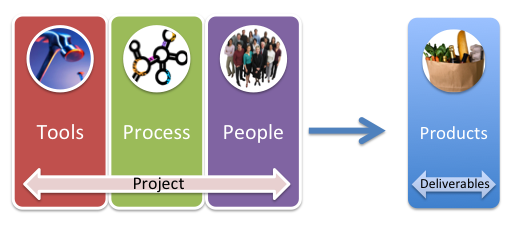This is now my 4th post in my Project Based Learning series – find the first three here. I want to show all these posts as a page (filtered tag) but I don’t quite know how to so if you do, please leave a comment below. I’ve been meaning to add to the series and this PBL conundrum post by @biancah80 prompted this; I’ve got a few more to write yet.
A quick review
Projects result in products or deliverables. Projects have a timeline which means there is a definite start and end.
Project managers have to balance scope, time, budget, people and quality; i.e. these are all the elements that have to be managed in order for the project to be deemed successful.
Project success cannot be guaranteed but there are ways to make it more likely. With regards to PBL, previous posts have suggested ways to promote collaboration (vs group work) as well as task and time management.
This post will take on a meta view of projects. This is another framework that should help PBL-planners to plan and evaluate PBLs.
Process, Tools, People
Projects involve people who have been brought in for their specific skills (collaboration). With the right tools, skilled people are able to be more efficient and productive. The process acts as the structure that holds together what needs to be done, why, how, by whom, when and where (promise to post more on this but if you can’t wait, try searching for 5W1H planning).
These are not all “necessary” but every experienced project manager will tell you that they are. I used to provide consultations along these line and I’m struggling to keep this simple here so please bear with me. If I get too vague, just say so! This is more in-line with process-based planning (see post 1)
I think what I’ll try to do is just list questions you might ask when creating, running or evaluating a PBL.
People
- What are the skills required to create a good product? If it’s movie-making task, do the students know how to write their story, create and edit footage, etc.? Be really specific.
- What training do the students need and when?
- What concepts do students need to know?
- How will students be grouped? What are the roles? (see post 2)
- How will students work together? How can teamwork be promoted? There is a reason why team-building is an industry in itself.
- What are the implications at individual, group and class level? How will this PBL pan out at all these levels?
- Do the students have the skill to manage their tasks and time? Time management is a skill in itself and merits teaching.
Tools
- What tools are needed to create the product? Note that not all tools are technology-based. Scaffolds like blackline masters are tools too.
- Do students have tools to manage tasks? Checklists can work well at this level.
- Do students have tools to manage time? Student diaries could work but a collective (group) view is essential. Does the schedule show critical points which could delay the project altogether? Accountability is good. (see post 3)
- Is there a tool to help students understand quality requirements? An evaluation criteria or rubric is helpful.
- Do students have tools to communicate with each other? with the teacher?
- Do students have tools to keep track of problems and solutions as they arise in the project?
- Are there tools to help students share ideas and resources even with other groups?
- Are the students having to learn too many tools?
Process
- Are the what, why, when, where, who and how defined? and understood?
- Does the process include checkpoints to help students manage tasks and time? (see post 3)
- Does the process include an evaluation of the process itself as well as the products?
All this makes sense to me. The question is: does this make sense to you? If not, what can I clarify?


